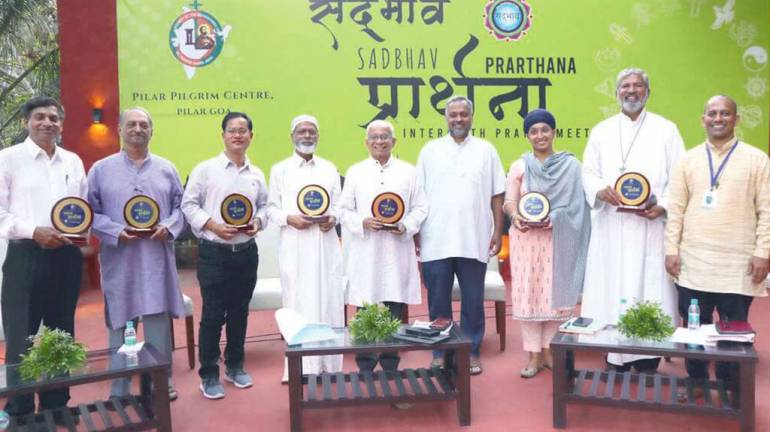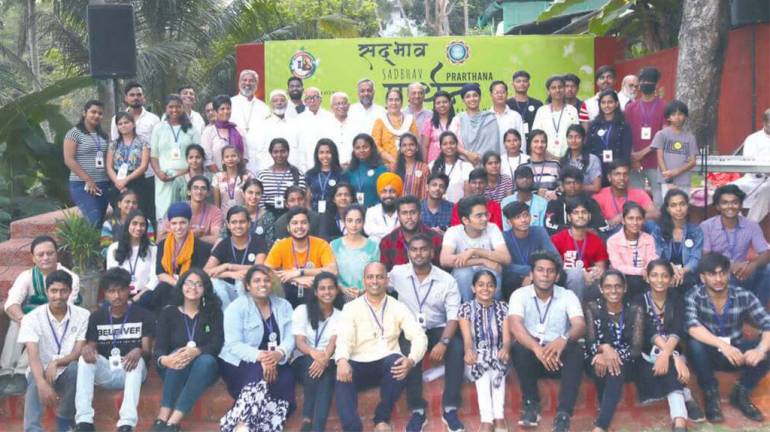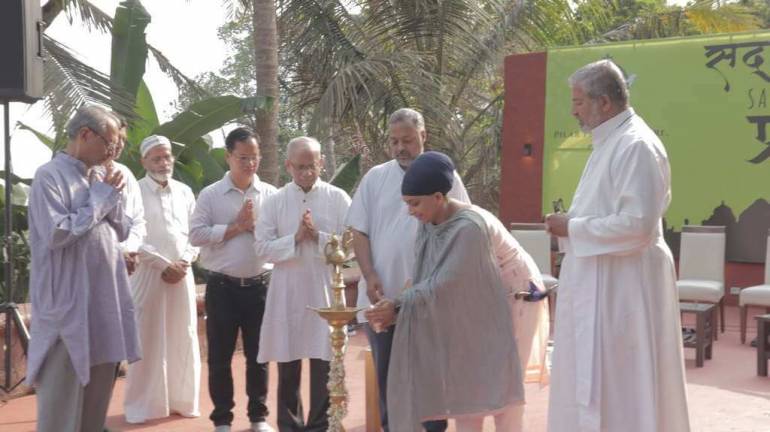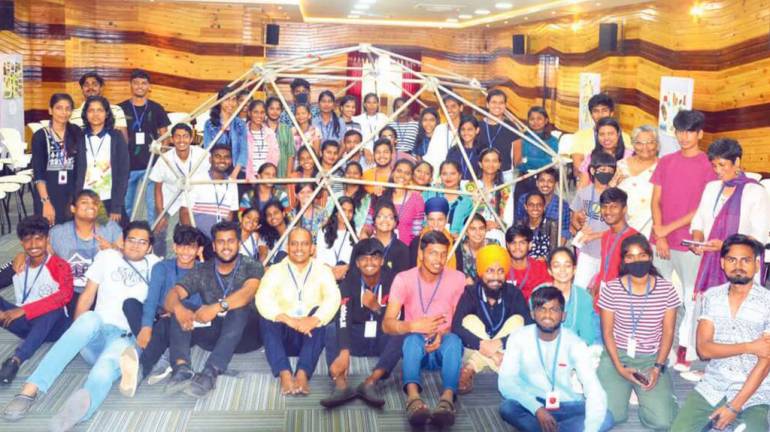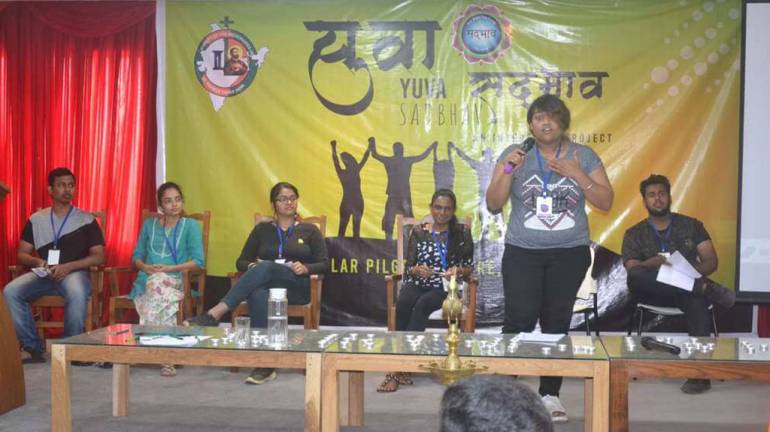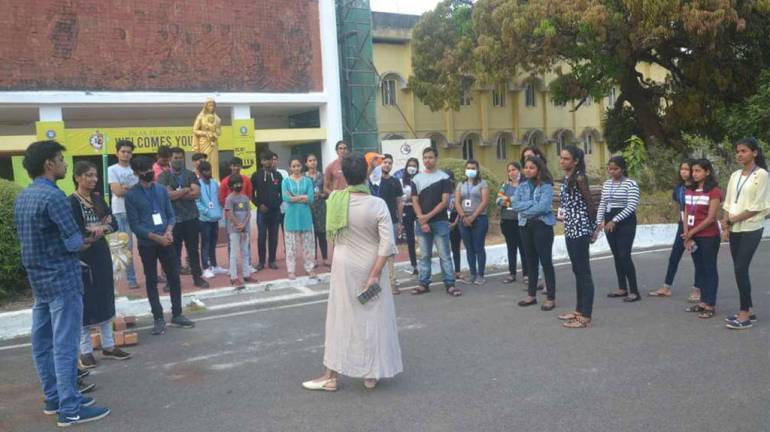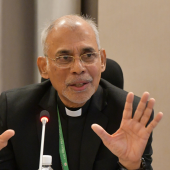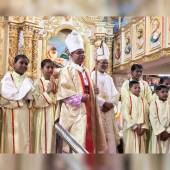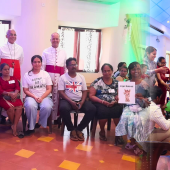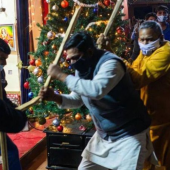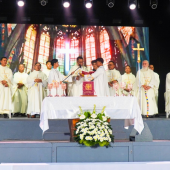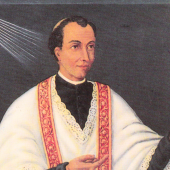Inter-faith program for youth held in Goa, western India
A church-run Pilar Pilgrim Center, Goa, western India, organized ‘Yuva Sadbhav,’ a two-day inter-faith program for young people from different faiths and beliefs, March 26-27.
Yuva Sadbhav is an activity of ‘Sadbhav’ (goodwill) – an initiative of the Society of Pilar (also known as Pilar Fathers and Brothers) to foster interfaith relations and communal harmony.
As many as 63 college students from 10 different colleges across Goa came together to dialogue and build solidarity with one another.
Pravin Sabnis, a corporate trainer, was one of the resource persons for the event.
In his session titled ‘rainbow diversity’, he said, “Without justice and dignity, equality is impossible. We have to work towards humanism and communal harmony through interaction between different communities to celebrate diversity.”
He further said, “Diversity is more important than unity for the future progress of human society and we need to keep aside our negative attitude of discrimination.”
The program enabled the youngsters to build bridges toward friendship and understanding. It allowed them to create trust, respect, and cooperation between people from different faiths and beliefs.
Sanket Yadav, one of the participants from Padre Conceicao College, Verna-Goa, said, “It has been an out of life experience.”
He further said, “I was reluctant to come for the program since I did not know what it had to offer. However, in two days, I can say that I have become a different person.”
A documentary film, titled “The Imam and the Pastor” was screened for the students.
The film, which depicts the reconciliation between Imam Muhammad Ashafa and Pastor James Wuye, and the peace-making initiatives which have flowed from it, had a great impact on the students.
Swarnjeet Singh from Dhempe College, Miramar, Panjim, said, “People who perpetrate inter-religious violence can also become agents of peace.”
Father Elvis Fernandes, the convenor, led the students through a group activity of sharing a positive experience in the past with persons of another religion.
He then invited the students to list down at least five close friends that they had since childhood and to what faith they belonged.
This activity led the students to think about the conscious and unconscious choices that they make when it comes to having friends.
He further asked the students to prepare a poster depicting interfaith harmony.
Tallulah D’Silva, the award-winning architect, environmentalist, and writer was also the resource person for the event.
She facilitated a team-building activity wherein students built a geodesic dome. It was building a structure together. The dome is basically like an outdoor classroom space, a tent-like structure that uses pentagons and hexagons.
The 60 plus components of the dome included a long stick and a short stack, and the hubs. Each student took two components, that is, a long stick and a short stack, and the hubs.
They gradually assembled the entire components and prepared the dome.
Astrilita Fernandes, from Ganpat Parsekar college of education, Arambol-Goa said, “It was a fantastic activity because the students had to learn how to work as a team.”
Joan Rebello, retired Vice-Principal of Damodar College of Commerce, Margao-Goa, was also a resource person.
She spoke on dialogue and how to resolve misunderstandings and disputes. After her presentation, the students went into groups. They were asked to choose issues at the global, national, state, family, and community levels.
Each group chose pertinent topics and the latest issues of hijab, war and strife, and interfaith marriage.
They discussed them in groups and the group representative presented what the group discussed. Their sharing gave an insight into how the youth think, and how much aware they are of the problems and solutions that we need to adopt.
Ambrin Beig and Asim Shaikh, core members of Sadbhav facilitated a group activity wherein the students were told to discuss how they would tackle insults and derogatory remarks towards one’s religion politely and humbly without hurting the person who insulted their religion.
Vandana Chandrashekar of St. Joseph Vaz College, Cortalim-Goa, said, “We need to be more understanding to the person who offended us rather than getting violent.”
Yuva Sadbhav came to a close with Sadbhav Prarthana - an interfaith prayer meets on the theme ‘Mercy and Forgiveness.
The prayer meeting was led by representatives from six different religions.
Subhash Sajane, a civil engineer, represented the Jain religion. Dr. Sitakant N. Kamat Ghanekar, an oncologist, represented Hinduism. Devapriyo Chakma from Arunachal Pradesh represented Buddhism. Maulana Abdul Quddus Khan, an active member of Jamaat-e-Islami Hind, represented Islam. Inderjeet Kaur, a teacher, in Kendriya Vidyalaya INS Mandovi, represented Sikhism. Jesuit Father Menino Gonsalves represented Christianity.
All spoke about experiencing God’s mercy and forgiveness and in turn becoming channels of God’s mercy and forgiveness.
Jesuit Father Cedric Prakash, a well-known human rights and peace activist, inspired the gathering through his ideas and critical thinking on the present-day issues related to interfaith.
Father Sebastiao Mascarenhas, the superior general of the Society of Pilar applauded the college students for participating in Yuva Sadbhav and celebrating their diversity.
He said that this is not just a one-time event but a movement to build communal harmony and peace.
Radio Veritas Asia (RVA), a media platform of the Catholic Church, aims to share Christ. RVA started in 1969 as a continental Catholic radio station to serve Asian countries in their respective local language, thus earning the tag “the Voice of Asian Christianity.” Responding to the emerging context, RVA embraced media platforms to connect with the global Asian audience via its 21 language websites and various social media platforms.





